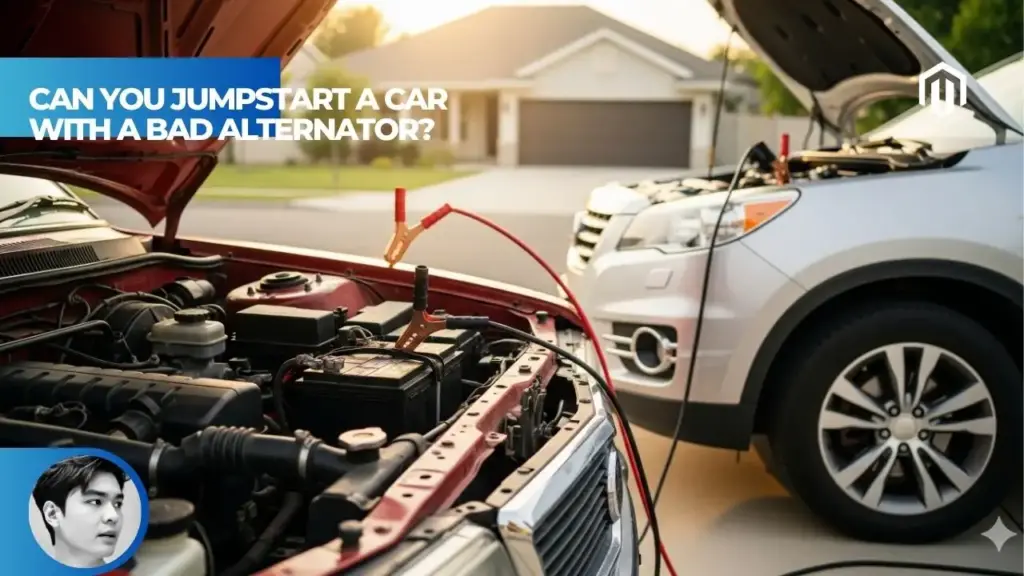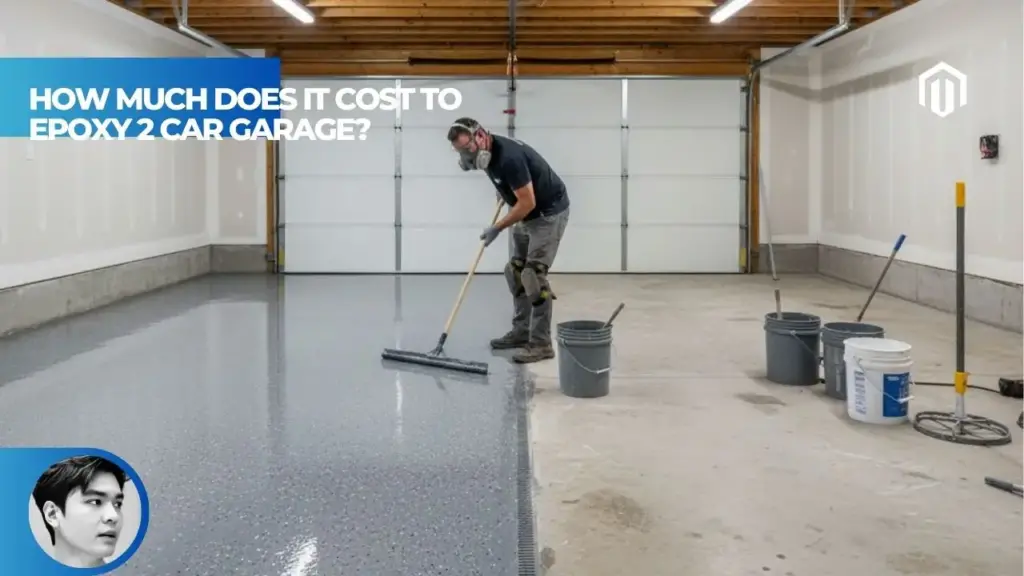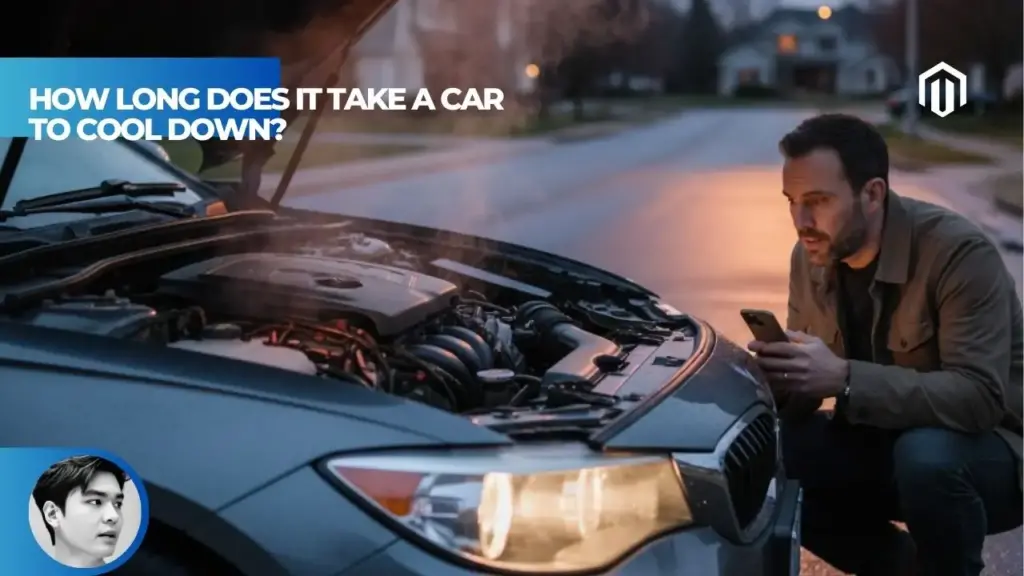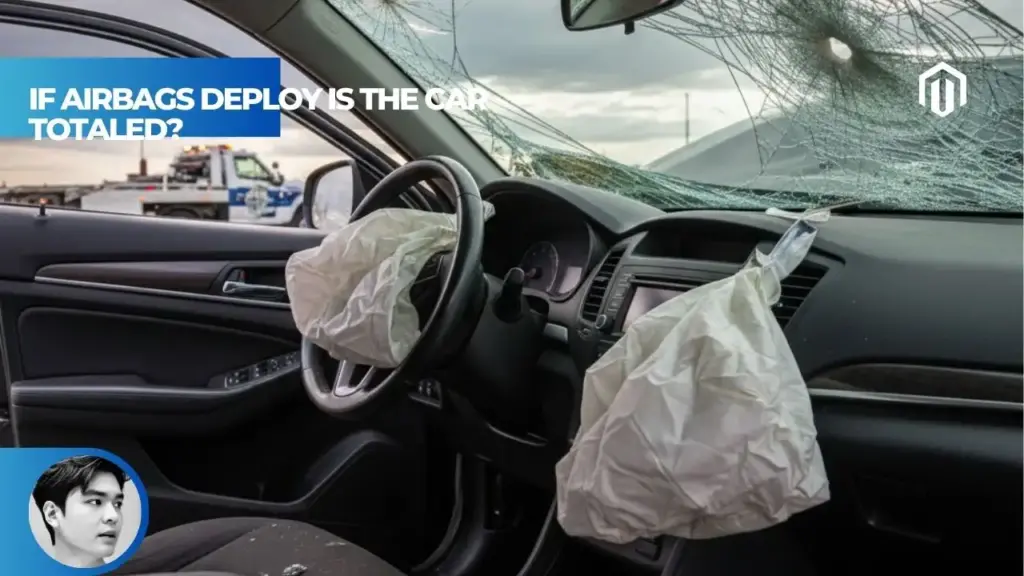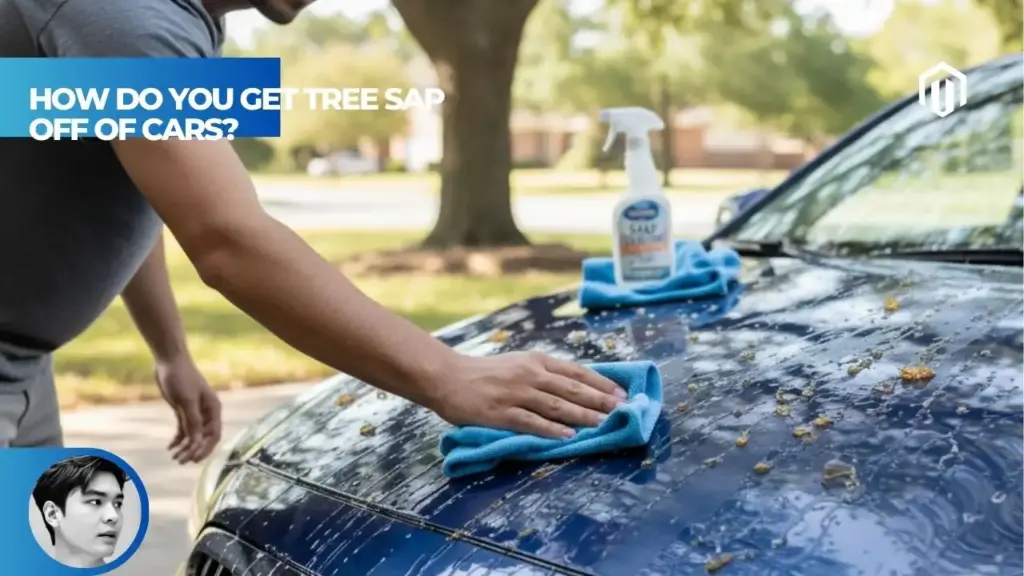You may also like:
- 【Explained】How Long Should a Car Battery Last Without Driving? The Definitive Guide
- 【Explained】Car Won’t Jump Start, But Lights Are On: Top 5 Reasons & Fixes
- 【Explained】How Long Does It Take to Replace a Car Battery? (A Full Breakdown)
- 【Explained】How Long Does It Really Take to Charge a Car Battery? Complete Guide
- 【Explained】Can You Jump Start a Car in the Rain? (A Step-by-Step Guide)
Yes, you can jumpstart a car with a bad alternator, but it’s only a temporary solution that will last 5-10 minutes before your engine dies again[1]. While the jumpstart provides enough power to crank the engine initially, a failing alternator cannot recharge the battery, leaving your vehicle running solely on battery power until it’s completely drained.
This scenario creates significant safety risks and leaves drivers stranded in potentially dangerous situations. Understanding when jumpstarting works, how long your car will run, and what steps to take can mean the difference between reaching safety and being stuck on a busy highway with a dead vehicle.
Modern vehicles rely heavily on electrical systems, making alternator failure more problematic than ever. With over 6.4 million roadside assistance calls related to dead batteries and charging system failures annually in the United States, knowing how to handle alternator emergencies safely has become essential knowledge for American drivers.
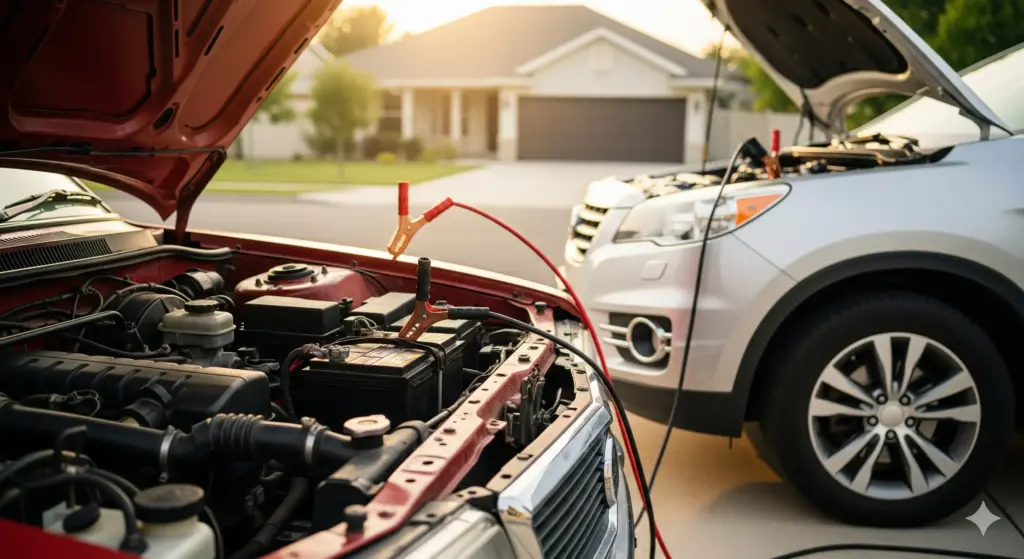
Understanding Bad Alternator vs Dead Battery Issues
Key Differences Between Battery and Alternator Problems
Distinguishing between battery and alternator failures requires understanding their distinct symptoms and diagnostic approaches. These components work together but fail differently, creating unique warning signs that drivers must recognize.
Battery failure symptoms when engine is off:
- Slow cranking with “rurr, rurr, rurr” sounds during starting attempts
- Dim interior lights and dashboard illumination before starting
- Clicking sounds from the starter when turning the key
- Swollen battery case or sulfur/rotten egg odors indicating internal damage
- Age-related decline typically after 3-5 years of service[2]
Bad alternator warning signs while engine running:
| Symptom Category | Specific Signs | When It Occurs |
|---|---|---|
| Dashboard warnings | Battery light illuminated, voltage gauge reading low/high | Engine running |
| Electrical issues | Flickering lights, slow power windows, weak AC | During operation |
| Audio indicators | Whining, grinding, or growling noises under hood | Engine running |
| Performance problems | Repeatedly dead batteries, burning rubber smell | Ongoing issues |
How to diagnose which component is failing:
- Engine-off test: Check if lights are dim or clicking occurs during starting attempts (battery issue)
- Engine-running test: Monitor dashboard battery light and electrical system performance (alternator issue)
- Voltage testing: Use multimeter to measure 12.6V+ when off (battery) and 13.5-14.5V when running (alternator)
- Professional diagnosis: AutoZone and similar retailers offer free electrical system testing[2]
Why jumpstarting works differently for each problem:
Battery issues respond well to jumpstarting because the alternator can maintain power once running. Alternator problems only provide temporary relief since the charging system cannot sustain electrical demands, making the jumpstart essentially “borrowing time” from the battery’s remaining capacity.
What Happens When You Start a Car With a Bad Alternator
Starting a car with a failed alternator creates a cascade of electrical system failures that progressively worsen until complete shutdown occurs. Understanding this process helps drivers prepare for the inevitable stall and plan emergency responses.
Engine starts but dies within 5-10 minutes because the battery alone cannot sustain the electrical load required for modern fuel injection systems, ignition components, and computer modules. The initial jumpstart provides enough power for startup, but without alternator recharging, the battery voltage drops below critical thresholds[1].
Electrical systems gradually fail during driving sequence:
- First 2-3 minutes: Normal operation as battery provides power
- Minutes 3-5: Dashboard lights dim, radio volume decreases, air conditioning weakens
- Minutes 5-8: Headlights noticeably dimmer, power steering assistance reduces
- Minutes 8-10: Engine performance degrades, fuel injection struggles, ignition becomes inconsistent
- Final shutdown: Complete electrical failure causes engine stall
Battery drains rapidly without recharging at rates much faster than normal discharge. A healthy alternator typically produces 13.5-14.4 volts to maintain battery charge and power electrical systems. Without this input, the battery voltage drops from 12.6V to below 10V within minutes under full electrical load.
Dashboard warning lights and system failures provide critical timing cues for emergency action. The battery warning light illuminates first, followed by engine management lights as computer systems lose power. Modern vehicles may display specific “charging system failure” messages on information displays, giving drivers clear indication of alternator problems.
How Long Will a Car Run With a Bad Alternator After Jumpstart
Runtime after jumpstarting with a bad alternator depends on multiple interconnected factors that drivers can influence through electrical load management and driving strategy. Understanding these variables helps maximize distance to safety.
Factors affecting runtime include:
| Factor | High Runtime Scenario | Low Runtime Scenario | Impact on Duration |
|---|---|---|---|
| Battery condition | New, fully charged battery | Old, partially charged battery | 3-10x difference |
| Electrical load | Minimal accessories, daytime driving | AC, lights, radio, GPS running | 50-75% reduction |
| Driving conditions | Highway cruising, warm weather | City stop-and-go, cold weather | 25-50% difference |
| Engine type | Older carbureted engines | Modern fuel-injected engines | 2-3x difference |
Typical timeframes by battery health and age:
- New battery (0-2 years), full charge: 15-25 minutes with minimal electrical load
- Good battery (2-4 years), partial charge: 8-15 minutes under normal conditions
- Old battery (4+ years), recently jumped: 3-8 minutes with any electrical load
- Severely degraded battery: 1-3 minutes regardless of conditions
Distance limitations and fuel efficiency impact vary significantly based on driving speed and traffic conditions. Highway driving at 55-65 mph might allow 5-15 miles of travel with a good battery, while city driving with frequent stops reduces this to 2-5 miles. Fuel efficiency typically decreases 10-20% as the engine management system struggles with reduced electrical power[1].
When the engine will stall and leave you stranded becomes predictable once drivers recognize warning signs. The sequence typically begins with dimming lights, progresses to reduced accessory power, and culminates in engine performance degradation. Smart drivers monitor these signs and plan immediate routes to safety rather than hoping for extended operation.
Can You Jumpstart a Car With a Bad Alternator? The Reality
Yes, But It’s Only a Temporary Solution
Jumpstarting a car with a bad alternator works initially because the process bypasses the failed charging system temporarily, but it creates false confidence that can lead to dangerous situations. Understanding the mechanics and limitations prevents poor decision-making during emergencies.
Why jumpstarting works initially with failed alternator:
The jumpstart process provides direct electrical power to the starter motor and ignition system, allowing the engine to fire and begin running. This initial success occurs regardless of alternator condition because the external power source (jumper cables and donor battery) supplies the necessary electricity for startup sequences.
Limited effectiveness compared to normal jumpstart scenarios:
| Normal Jumpstart | Bad Alternator Jumpstart | Key Differences |
|---|---|---|
| Battery recharges while driving | Battery continues draining | No sustained power source |
| Electrical systems remain stable | Progressive system failures | Declining performance |
| Can drive indefinitely | Limited to battery capacity | Time-critical situation |
| Single jumpstart usually sufficient | May require multiple jumps | Recurring problem |
Electrical power source during the brief running period comes entirely from the battery, which was partially charged during the jumpstart process. The alternator normally contributes 100+ amps of continuous power to run electrical systems and recharge the battery. Without this input, the battery must provide all power for fuel injection, ignition, lights, computer modules, and accessories.
Battery vs alternator roles in keeping engine running:
- Battery role: Provides power for starting and temporary electrical system support
- Alternator role: Recharges battery and powers all electrical systems during operation
- Emergency operation: Battery alone cannot sustain modern engine management systems
- Critical threshold: Engine stalls when battery voltage drops below 9-10 volts[3]
When purchasing a used vehicle, alternator condition becomes a crucial inspection point that many buyers overlook, potentially leading to expensive roadside emergencies.
Safety Risks and Dangers of Jumpstarting With Bad Alternator
Jumpstarting with alternator failure creates multiple safety hazards that extend beyond normal jumpstart risks. These dangers can result in injury, vehicle damage, and dangerous roadside situations that put drivers and passengers at serious risk.
Fire hazard from sparks and hydrogen gas exposure increases significantly when jumpstarting vehicles with electrical system problems. Bad alternators can create irregular voltage spikes that produce more sparking during cable connection. Hydrogen gas naturally accumulates around batteries, and any spark can ignite this invisible gas, causing explosions and severe burns[3].
Critical fire prevention measures:
- Ventilated areas: Never jumpstart in enclosed spaces like garages
- No smoking: Eliminate all ignition sources within 50 feet of batteries
- Proper cable sequence: Connect positive first, negative to ground (not battery)
- Quality cables: Use heavy-duty jumper cables rated for your vehicle’s engine size
Electrical system damage from voltage surges affects sensitive electronic components throughout modern vehicles. Bad alternators can produce voltage spikes up to 20 volts instead of the normal 12-14 volt range. These surges can damage ECUs (electronic control units), airbag systems, infotainment systems, and other expensive electronics[4].
Risk of getting stranded in dangerous locations increases dramatically because alternator failure provides unpredictable timing. Unlike battery failure that typically occurs when parked, alternator-related stalling happens during driving, potentially leaving drivers stranded on highways, in bad weather, or in unsafe neighborhoods.
Potential damage to donor vehicle’s electrical system occurs when the donor alternator must work harder to charge two depleted batteries simultaneously. This extra load can damage the donor alternator, battery, or electrical components, especially if the donor vehicle has an older or marginal charging system.
When Jumpstarting Might Not Work at All
Certain conditions prevent jumpstarting from succeeding, regardless of technique or equipment quality. Recognizing these scenarios helps drivers avoid wasting time with futile attempts and focus on calling for professional assistance.
Completely dead alternator scenarios where internal components have failed catastrophically prevent any charging whatsoever. Signs include physically damaged alternator cases, burnt odors, or complete absence of voltage output even when engine runs. In these cases, the battery drains so quickly that jumpstarting may not provide enough power for sustained operation.
Severely damaged battery conditions that prevent jumpstart success:
| Battery Problem | Symptoms | Jumpstart Success Rate | Recommended Action |
|---|---|---|---|
| Internal short circuit | Battery hot to touch, rapid drain | 0-10% | Replace battery immediately |
| Frozen electrolyte | Swollen case, no voltage | 0% | Wait for thaw, may be damaged |
| Dry cells | Low fluid levels visible | 10-30% | Add distilled water if possible |
| Corroded terminals | White/green buildup | 60-80% | Clean terminals first |
Multiple electrical system failures create compounding problems that jumpstarting cannot resolve. When alternator failure occurs alongside starter problems, battery damage, or major electrical faults, the vehicle may require comprehensive electrical system repair before becoming operational.
Signs that jumpstarting won’t be effective:
- No engine cranking despite successful cable connection and donor vehicle power
- Immediate restart failure after disconnecting jumper cables
- Visible alternator damage such as broken belts, burnt wiring, or cracked cases
- Multiple warning lights indicating widespread electrical system failure
- Previous failed jumpstart attempts within the same day or recent period
Understanding these limitations helps drivers make informed decisions about when to attempt jumpstarting versus calling for professional towing and repair services immediately.
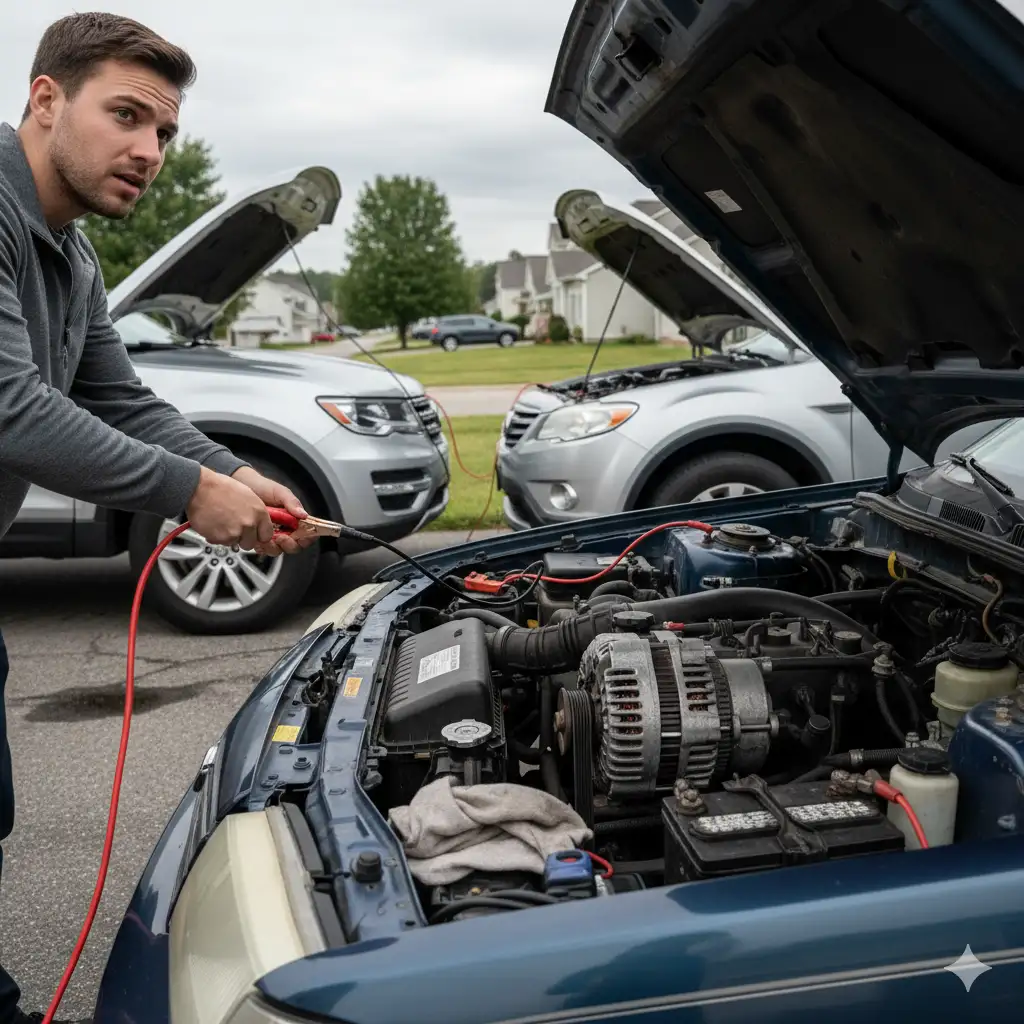
Step-by-Step Guide to Safely Jumpstart With Bad Alternator
Essential Safety Preparations and Equipment
Proper preparation significantly reduces risks when jumpstarting a vehicle with alternator problems. Having the right equipment and following systematic safety protocols can prevent injury, vehicle damage, and failed jumpstart attempts.
Required tools and safety equipment checklist:
- Heavy-duty jumper cables (minimum 4-gauge wire, 20+ feet length)
- Safety glasses to protect against battery acid splashes and sparks
- Work gloves for grip and protection from electrical shock
- Digital multimeter for voltage testing and diagnosis
- Emergency flashlight for visibility during nighttime operations
- Fire extinguisher (Class C electrical-rated) for emergency response
- Cell phone charged and ready for emergency assistance calls
Positioning vehicles correctly for safe access requires strategic planning to minimize risks and provide adequate working space. Park vehicles close enough for cable reach but maintain separation for safety and emergency exit routes.
Optimal vehicle positioning guidelines:
| Positioning Factor | Recommended Setup | Safety Benefit |
|---|---|---|
| Distance | 18-36 inches between batteries | Cable reach without strain |
| Engine orientation | Batteries facing each other | Shortest cable runs |
| Ground surface | Level, stable pavement | Prevents rolling/sliding |
| Traffic clearance | Away from moving traffic | Reduces accident risk |
- Safety precautions for electrical hazards must address the increased risks associated with alternator failure and potential electrical system instability. Bad alternators can create unpredictable voltage fluctuations that increase shock and fire risks.
- Pre-jumpstart alternator and battery testing helps identify severe problems that might prevent successful jumpstarting or create additional hazards. Use a digital multimeter to check battery voltage (should be above 8-10 volts) and visually inspect the alternator for obvious damage like broken belts or burnt wiring[2].
Proper Jumpstarting Technique for Alternator Issues
Jumpstarting vehicles with alternator problems requires modified techniques that account for electrical system instability and extended charging times. Following the correct sequence prevents damage and maximizes success probability.
Correct jumper cable connection sequence for alternator failure:
- Connect positive cable to dead battery positive terminal first
- Connect positive cable to donor battery positive terminal second
- Connect negative cable to donor battery negative terminal third
- Connect negative cable to dead vehicle ground point (not battery) fourth
- Start donor vehicle and allow 5-10 minutes of charging time
- Attempt to start dead vehicle with donor still running
Allowing adequate charging time before starting attempt becomes more critical with alternator failure because the dead battery needs more power to sustain operation without charging system support. Standard jumpstart procedures recommend 2-3 minutes of charging, but alternator failure cases benefit from 5-10 minutes of pre-charging[1].
Extended charging time benefits:
- Higher initial voltage provides more electrical reserve for operation
- Better starting success rate with fully charged jump attempt
- Longer runtime after disconnecting cables due to improved battery state
- Reduced strain on donor vehicle’s electrical system
Starting procedure and initial engine running checks require careful monitoring for signs of electrical system problems or imminent failure. Keep the donor vehicle running throughout the process and monitor both vehicles for warning signs.
Immediate post-start electrical system assessment:
- Check dashboard warning lights for battery, alternator, or charging system indicators
- Test electrical accessories (lights, radio, air conditioning) for proper operation
- Monitor engine performance for smooth idling and acceleration response
- Listen for unusual sounds from alternator area (grinding, whining, squealing noises)
What to Do Immediately After Successful Jumpstart
The critical period immediately after jumpstarting determines whether drivers reach safety or experience roadside breakdown. Quick decision-making and electrical system management can extend operating time and ensure safe arrival at repair facilities.
Keeping engine running and electrical load management requires immediate action to minimize power consumption and extend battery life. Turn off all non-essential electrical systems and plan the shortest route to professional assistance.
Electrical load reduction priorities:
| System Priority | Keep Running | Turn Off Immediately | Battery Impact |
|---|---|---|---|
| Critical systems | Engine, fuel injection, ignition | None | Essential for operation |
| Safety systems | Headlights (if needed), hazard lights | None | Required for safety |
| Comfort systems | None | Air conditioning, radio, heated seats | High power consumption |
| Convenience systems | None | GPS, phone chargers, power windows | Moderate consumption |
Emergency driving priorities and route planning must account for the limited operational timeframe and potential for sudden shutdown. Choose routes with safe stopping areas and avoid highways where stalling creates extreme danger.
Smart route selection strategies:
- Surface streets with frequent safe stopping points instead of highways
- Right lane travel to facilitate emergency stops and assistance access
- Direct routes to nearest auto repair facility or safe parking area
- Emergency contacts notified of situation and expected arrival time
Monitoring dashboard warning lights and system performance provides critical timing information for emergency decisions. Watch for progressive electrical system degradation and be prepared for immediate safe stopping when performance deteriorates.
Preparing for potential stalling during transit includes identifying safe stopping locations, having emergency supplies ready, and maintaining communication with assistance services. Keep cell phone charged and emergency flashers accessible for roadside safety[3].
For drivers considering automotive maintenance timing, understanding alternator service intervals becomes crucial for preventing these emergency situations entirely.
How Far Can You Drive a Car With a Bad Alternator?
Factors Affecting Driving Distance and Duration
Driving distance with a failed alternator depends on multiple variables that drivers can partially control through strategic electrical load management and route selection. Understanding these factors helps maximize emergency driving range and improve safety outcomes.
Battery capacity and current charge level serve as the primary determinant of operational time. A fully charged, healthy battery typically provides 45-75 amp-hours of capacity, while a recently jumped battery may have only 10-30 amp-hours available for vehicle operation.
Electrical system load breakdown by component:
| Electrical Component | Power Draw (Amps) | Impact on Runtime | Control Options |
|---|---|---|---|
| Essential systems | 15-25 amps | Baseline consumption | Cannot reduce |
| Headlights | 8-15 amps | 25-40% reduction in runtime | Use only when necessary |
| Air conditioning | 10-20 amps | 30-50% reduction in runtime | Turn off immediately |
| Radio/infotainment | 2-8 amps | 10-15% reduction in runtime | Disable for battery savings |
- Engine type and fuel injection system requirements significantly impact electrical consumption and operational duration. Modern fuel-injected engines require continuous electrical power for computer-controlled fuel delivery, ignition timing, and emission control systems. Older carbureted engines use less electrical power and may operate longer with battery power alone[5].
- Weather conditions and driving environment impact affects both battery performance and electrical system demands. Cold weather reduces battery capacity by 20-50%, while hot weather increases cooling system electrical loads. Rain requires headlight and wiper operation, further reducing available runtime.
Emergency Driving Strategies to Maximize Distance
Strategic driving techniques can significantly extend operational distance when alternator failure occurs. These emergency protocols help drivers reach safety while minimizing risks of sudden shutdown in dangerous locations.
Reducing electrical load and non-essential systems requires immediate action to preserve battery power for critical engine operation. Turn off air conditioning, radio, interior lights, and any aftermarket electrical accessories within the first minute of operation.
Priority electrical system management:
- Immediate shutdown: Air conditioning, radio, interior lights, phone chargers
- Use only when necessary: Headlights, turn signals, brake lights
- Never turn off: Engine management systems, fuel pump, ignition system
- Emergency use only: Hazard flashers, cell phone for emergency calls
Optimal driving speed and technique for battery conservation focuses on maintaining steady speeds that minimize engine electrical demands. Highway cruising at 45-55 mph typically provides the best balance between distance covered and electrical efficiency.
Battery preservation driving techniques:
- Steady speeds: Avoid rapid acceleration and frequent speed changes
- Anticipate traffic: Coast to slow down rather than using brakes frequently
- Choose efficient routes: Avoid hills and stop-and-go traffic when possible
- Manual transmission advantage: Engine braking reduces electrical load on brake lights
Route selection for emergency repair facility access should prioritize proximity over convenience, focusing on reaching professional assistance before complete electrical failure occurs. Use smartphone GPS quickly to identify nearby auto repair shops, then turn off the device to preserve battery power.
Battery preservation tips during alternator failure include techniques that many drivers overlook but can provide crucial additional operating time in emergency situations[1].
Warning Signs That You Need to Stop Immediately
Recognizing critical warning signs prevents dangerous situations where complete electrical failure occurs while driving at highway speeds or in heavy traffic. These indicators provide essential timing cues for emergency stopping decisions.
Dashboard lights indicating imminent system failure follow predictable patterns as battery voltage drops below critical thresholds. Modern vehicles display specific warning messages that help drivers gauge remaining operational time.
Progressive warning light sequence:
| Battery Voltage | Warning Lights Active | Estimated Runtime | Recommended Action |
|---|---|---|---|
| 11.5-12.0 volts | Battery light, low fuel economy | 5-10 minutes | Find safe stopping point |
| 10.5-11.5 volts | Multiple system warnings | 2-5 minutes | Stop immediately when safe |
| 9.5-10.5 volts | Engine management lights | 30 seconds-2 minutes | Pull over immediately |
| Below 9.5 volts | Complete system failure | Seconds | Engine will stall |
Engine performance degradation symptoms provide critical audio and tactile cues that complement visual dashboard warnings. Listen for changes in engine sound, feel for reduced power, and notice any hesitation during acceleration or idling.
Performance degradation indicators:
- Rough idling: Engine struggles to maintain consistent RPM
- Reduced power: Noticeable loss of acceleration capability
- Hesitation: Engine stumbles during acceleration or gear changes
- Stalling tendency: Engine wants to die at traffic lights or low RPM
Electrical system shutdown progression follows predictable patterns that help drivers time emergency stops. Non-essential systems fail first, followed by comfort systems, then safety systems, and finally critical engine management components.
Safety risks of continued driving with failing systems include loss of power steering, brake assistance, and engine power at critical moments. Modern vehicles rely heavily on electrical systems for basic operation, making continued driving extremely dangerous once warning signs appear[3].
Smart drivers recognize these warning signs early and prioritize safety over convenience, pulling over in safe locations rather than risking sudden failure in dangerous traffic situations.
Troubleshooting and Next Steps After Jumpstarting
Diagnosing Alternator vs Battery Problems After Jumpstart
Accurate diagnosis after jumpstarting helps drivers make informed decisions about repair priorities and immediate safety actions. Professional-grade testing techniques can be performed with basic tools to confirm alternator failure and assess battery condition.
Voltage testing procedures with multimeter provide definitive diagnosis of charging system problems. These measurements distinguish between alternator failure, battery damage, and other electrical issues that might cause similar symptoms.
Systematic voltage testing protocol:
- Engine off test: Battery should read 12.4-12.8 volts when vehicle sits for 30+ minutes
- Engine running test: Voltage should increase to 13.5-14.5 volts at idle with alternator working
- Load test: Turn on headlights and AC while running – voltage should stay above 13.0 volts
- Battery isolation: Remove negative cable while running – engine should continue (alternator working)
Professional diagnostic options and mobile services offer convenient alternatives when roadside diagnosis confirms alternator failure. Many auto parts stores provide free electrical system testing, while mobile mechanics can perform on-site repairs in many metropolitan areas[2].
Diagnostic test results interpretation:
| Test Result | Battery Voltage (Off) | System Voltage (Running) | Likely Problem | Immediate Action |
|---|---|---|---|---|
| Normal | 12.4-12.8V | 13.5-14.5V | False alarm/temporary issue | Monitor for recurrence |
| Bad alternator | 12.0-12.6V | 12.0-12.6V (no increase) | Alternator replacement needed | Limit driving |
| Bad battery | Below 12.0V | 13.5-14.5V | Battery replacement needed | Safe to drive |
| Both failing | Below 12.0V | Below 13.0V | Both need replacement | Tow to repair shop |
- Symptoms that confirm alternator replacement needs include consistent failure to maintain proper charging voltage, physical damage to alternator components, or recurring dead battery problems despite battery replacement. Grinding, whining, or squealing noises from the alternator area also indicate imminent failure.
- When battery replacement might also be necessary occurs frequently with alternator failure because deep discharge cycles and prolonged operation without proper charging can permanently damage battery internal components. Batteries subjected to repeated deep discharge may need replacement even after alternator repair[2].
Emergency Repair Options and Temporary Solutions
When alternator failure occurs far from home or during inconvenient times, understanding available repair options helps drivers make cost-effective decisions about immediate fixes versus temporary solutions. Multiple service alternatives exist depending on location and urgency.
Mobile mechanic services for on-site alternator repair have expanded significantly across major US metropolitan areas, offering convenient alternatives to traditional towing and shop repair. These services typically charge premium rates but save towing costs and provide immediate resolution.
Mobile service comparison options:
| Service Type | Typical Cost Range | Response Time | Availability | Best For |
|---|---|---|---|---|
| AAA Mobile | $150-300 + parts | 1-3 hours | Major cities only | AAA members |
| Independent mobile | $200-400 + parts | 2-6 hours | Variable by location | Non-members |
| Dealership mobile | $250-500 + parts | 4-24 hours | Limited availability | Warranty vehicles |
| Parts store service | $100-250 + parts | Same day | Auto parts stores | Basic repairs |
Parts availability and emergency replacement costs vary significantly based on vehicle make, model, and location. Common domestic and import vehicles typically have alternators available at auto parts stores, while luxury and exotic vehicles may require special ordering with extended wait times.
Current alternator replacement cost ranges (2025):
- Economy vehicles (Honda Civic, Toyota Corolla): $350-600 total
- Mid-size vehicles (Ford F-150, Chevrolet Malibu): $450-800 total
- Luxury vehicles (BMW, Audi, Mercedes): $800-1,500+ total
- Heavy-duty trucks: $600-1,200 total depending on alternator amperage[6]
Temporary alternator bypass methods (not recommended) exist but create serious safety risks and potential legal liability. While some older vehicles could operate briefly without alternators, modern fuel injection and engine management systems require consistent electrical power for safe operation.
Towing vs driving decisions for safety should always prioritize safety over cost considerations. If diagnostic tests confirm complete alternator failure and destination is more than 5-10 miles away, professional towing represents the safer choice despite higher immediate costs.
Cost Considerations for Alternator Replacement
Understanding current alternator replacement costs helps drivers budget for repairs and make informed decisions about repair shop selection. Prices vary significantly based on vehicle type, parts quality, and labor rates in different regions.
Average alternator replacement costs by vehicle type reflect both parts costs and labor complexity. Luxury vehicles and those with cramped engine compartments require more labor time, significantly increasing total repair costs.
2025 alternator replacement cost breakdown:
| Vehicle Category | Parts Cost | Labor Cost | Total Range | Labor Hours |
|---|---|---|---|---|
| Compact cars | $150-300 | $150-250 | $300-550 | 1.0-1.5 hours |
| Mid-size sedans/SUVs | $200-400 | $200-350 | $400-750 | 1.5-2.5 hours |
| Luxury vehicles | $400-800 | $300-600 | $700-1,400 | 2.0-4.0 hours |
| Heavy-duty trucks | $300-600 | $250-400 | $550-1,000 | 2.0-3.0 hours |
Labor costs and diagnostic fees at different shop types vary substantially based on overhead costs and service quality. Independent shops typically charge less than dealerships but may lack specialized diagnostic equipment for luxury vehicles.
Shop type cost comparison:
- Independent repair shops: $75-125/hour labor rates, lower overhead
- Chain repair shops: $100-150/hour labor rates, standardized procedures
- Dealership service departments: $125-200/hour labor rates, factory training
- Mobile mechanics: $100-175/hour plus travel charges, convenience premium
New vs rebuilt alternator options and warranties present significant cost differences with varying reliability expectations. New alternators cost 50-100% more than rebuilt units but typically include longer warranties and better reliability records[6].
Insurance coverage possibilities for emergency repairs depend on specific policy language and failure circumstances. Comprehensive coverage may apply if alternator failure results from covered events like accidents or weather damage, while roadside assistance coverage often includes towing to repair facilities.
Understanding these cost factors helps drivers make informed decisions about repair timing and shop selection, especially when vehicle reliability becomes critical for daily transportation needs.
Prevention and Long-Term Alternator Care
Early Warning Signs to Prevent Complete Alternator Failure
Recognizing early alternator problems prevents roadside emergencies and reduces repair costs through timely intervention. Professional automotive sources recommend systematic monitoring of charging system performance to catch problems before complete failure occurs.
Regular electrical system inspection and testing schedule helps identify developing problems before they cause breakdowns. Most alternators provide warning signs weeks or months before complete failure, giving drivers time for planned repairs rather than emergency replacements.
Recommended inspection intervals:
- Monthly visual inspection: Check alternator belt condition and electrical connections
- Quarterly voltage testing: Use multimeter to verify proper charging voltage
- Annual professional testing: Include alternator test during routine maintenance visits
- Pre-trip inspection: Test charging system before long road trips or extreme weather
Dashboard warning light meanings and response timing provide critical early warning systems that many drivers ignore until complete failure occurs. Modern vehicles include sophisticated monitoring systems that detect charging problems before they become critical.
Warning light interpretation guide:
| Dashboard Warning | Possible Causes | Urgency Level | Recommended Action |
|---|---|---|---|
| Battery light (intermittent) | Loose belt, early alternator wear | Medium | Test within 1 week |
| Battery light (constant) | Alternator failure imminent | High | Test immediately |
| Voltage gauge reading low | Charging system problems | High | Professional diagnosis |
| Multiple electrical warnings | Widespread system failure | Critical | Stop driving safely |
- Seasonal alternator stress factors and maintenance needs require attention during extreme weather periods when electrical system demands increase significantly. Summer air conditioning loads and winter heating/lighting demands stress aging alternators beyond normal operating parameters[7].
- Professional testing intervals and diagnostic procedures should align with manufacturer maintenance schedules, typically every 30,000-60,000 miles depending on driving conditions and vehicle age. Autvex recommends including alternator testing during major service intervals to prevent unexpected failures.
Driving Habits That Extend Alternator Life
Proper driving techniques and electrical system management can significantly extend alternator service life, reducing replacement frequency and preventing emergency failures. Understanding how driving habits affect alternator longevity helps drivers develop protective behaviors.
Proper engine warm-up procedures for electrical system health allow alternator components to reach optimal operating temperature before heavy electrical loads are applied. Cold alternators work less efficiently and suffer more wear when immediately subjected to maximum electrical demands.
Alternator-friendly warm-up routine:
- Start engine and allow 30-60 seconds of idle before driving
- Minimize electrical loads during first 2-3 minutes of operation
- Gradually increase accessory usage as engine warms up
- Avoid immediate high-load activities like rapid acceleration or maximum AC
Managing electrical load during engine operation prevents alternator overwork and reduces component wear. Modern vehicles can easily exceed alternator capacity when all electrical systems operate simultaneously, causing stress and premature failure.
Smart electrical load management:
- Prioritize essential systems (fuel injection, ignition, safety lights)
- Use accessories selectively (AC or heated seats, not both simultaneously)
- Turn off unused systems (rear defogger when clear, interior lights)
- Avoid aftermarket additions without considering alternator capacity impact
Battery maintenance impact on alternator longevity creates significant interconnection between these components. Weak batteries force alternators to work harder, reducing service life and increasing failure probability. Proper battery maintenance extends both component lives[2].
Climate and environmental factors affecting alternator wear include temperature extremes, humidity levels, and exposure to road salt or dust. These factors influence alternator internal component degradation and require adjusted maintenance schedules in harsh environments.
Emergency Preparedness for Future Alternator Issues
Proactive emergency preparedness reduces stress and danger when alternator problems occur unexpectedly. Having proper equipment and established procedures helps drivers handle emergencies safely and efficiently.
Essential emergency kit items for electrical system failures should be standard equipment in all vehicles, especially those approaching higher mileage or showing early warning signs of charging system problems.
Complete electrical emergency kit contents:
| Item Category | Specific Items | Purpose | Storage Location |
|---|---|---|---|
| Testing equipment | Digital multimeter, circuit tester | Diagnosis | Glove compartment |
| Safety gear | Safety glasses, work gloves, flashlight | Protection | Emergency kit |
| Tools | Basic wrench set, screwdrivers | Minor repairs | Trunk tool kit |
| Communication | Fully charged phone, emergency contacts list | Call for help | Always accessible |
- Mobile battery pack alternatives to jumpstarting provide independent power sources that don’t require donor vehicles or Good Samaritan assistance. Modern lithium-ion jump packs offer sufficient power for multiple start attempts in compact, portable packages.
- Emergency service contact information and membership benefits should be organized and easily accessible during stressful roadside situations. AAA, manufacturer roadside assistance, and insurance company emergency services provide professional help when self-service solutions aren’t feasible[3].
- Backup transportation planning for alternator emergencies helps minimize disruption to work, family, and social commitments when primary vehicles become unreliable. Having established relationships with ride-sharing services, rental car companies, and family/friend support networks reduces emergency stress and provides options during extended repairs.
Comprehensive emergency preparedness transforms potentially dangerous situations into manageable inconveniences, protecting both personal safety and financial interests during alternator failure events.

Key Takeaways
- Jumpstarting works but provides only 5-10 minutes of operation with a bad alternator, making it strictly an emergency measure to reach safety rather than a long-term solution.
- Turn off all non-essential electrical systems immediately after jumpstarting – air conditioning, radio, and interior lights can cut your operating time in half by draining the battery faster.
- Plan your route to the nearest repair shop within 2-3 miles and avoid highways where sudden stalling creates extreme danger – surface streets with frequent safe stopping points offer better emergency options.
- Monitor dashboard warning lights closely as they provide predictable timing cues – when multiple electrical warnings appear, you have less than 2 minutes before complete system failure.
- Alternator replacement costs range from $350-1,500 depending on your vehicle type, with luxury cars requiring significantly higher investment for parts and labor in 2025.
- Prevent alternator failure through regular maintenance including monthly belt inspections, quarterly voltage testing, and professional electrical system checks during routine service intervals.
- Keep emergency equipment ready including jumper cables, multimeter, safety gear, and a fully charged phone – being prepared reduces panic and improves safety outcomes during roadside emergencies.
FAQs
Will a car start with a bad alternator?
Yes, a car can start with a bad alternator if the battery has sufficient charge. The starter motor and ignition system draw power from the battery during startup, not the alternator. However, once running, the engine will only operate for 5-10 minutes before the battery drains completely and the vehicle stalls[1].
How long can a car run with a bad alternator?
A car typically runs 5-15 minutes with a completely failed alternator, depending on battery condition and electrical load. A fully charged, healthy battery might provide 15-25 minutes of operation with minimal accessories, while an older or recently jumped battery may only last 3-8 minutes before the engine stalls[1].
Can you drive a car with a bad alternator safely?
Driving with a bad alternator is not safe because the vehicle can stall unexpectedly, potentially in dangerous traffic situations. The unpredictable timing of electrical failure makes highway driving extremely risky. If you must drive, use surface streets only, minimize electrical load, and head directly to the nearest repair facility[3].
What happens if you drive with a bad alternator?
Driving with a bad alternator causes progressive electrical system failure, starting with dimming lights and weak accessories, then engine performance degradation, and finally complete shutdown. The battery cannot sustain modern fuel injection and computer systems without alternator support, leading to sudden stalling[1].
How do you start a car with a bad alternator without jumper cables?
Without jumper cables, you can try push-starting (manual transmission vehicles only) or using a portable battery jump pack. However, these methods still only provide temporary operation since the alternator cannot recharge the battery. The engine will stall within minutes regardless of starting method[3].
Will my car battery charge with a bad alternator?
No, a bad alternator cannot charge the car battery. The alternator’s primary function is generating electrical power and recharging the battery while the engine runs. With alternator failure, the battery only discharges during vehicle operation, eventually leading to complete power loss and engine shutdown[2].
Can a bad alternator damage other car systems?
Yes, a failing alternator can damage sensitive electronic components through voltage irregularities and power surges. Modern vehicles contain over 200 electronic control units that can be damaged by voltage spikes from alternator failure, potentially causing expensive repairs beyond just alternator replacement[4].
How much does alternator replacement cost in 2025?
Alternator replacement costs range from $350-1,500 in 2025, depending on vehicle type. Economy cars typically cost $350-600, mid-size vehicles $450-800, and luxury vehicles $800-1,500+. Labor accounts for $150-600 of the total cost, with parts ranging from $150-800 based on vehicle complexity[6].
Can you jumpstart someone else’s car if your alternator is bad?
You can provide a jumpstart to another vehicle even with a bad alternator, but it may damage your electrical system. Your alternator will struggle to recharge both batteries simultaneously, potentially causing overheating or failure. It’s better to use a portable jump pack or call for professional assistance[3].
What’s the difference between alternator failure and battery failure symptoms?
Battery failure symptoms appear when the engine is off (slow cranking, dim lights), while alternator failure symptoms occur when the engine is running (dashboard battery light, flickering lights, electrical accessories working poorly). Battery problems prevent starting, alternator problems cause stalling during operation[2].
References
- Tires Plus. (2025). Will a Car Jump-Start with a Bad Alternator? https://www.tiresplus.com/blog/maintenance/jumpstart-with-bad-alternator/
- Firestone Complete Auto Care. (2023). Signs of a Bad Battery vs. Alternator Issue. https://www.firestonecompleteautocare.com/blog/batteries/how-to-know-if-battery-or-alternator-is-bad/
- AutoZone. (2024). Can You Jumpstart a Car With a Bad Alternator? https://www.autozone.com/diy/alternator/can-you-jumpstart-a-car-with-a-bad-alternator
- Fleet Auto News. (2023). Beware the risks of jump starting. https://fleetautonews.com.au/beware-the-risks-of-jump-starting/
- Tires Plus. (2023). How to Tell if Battery, Alternator, or Starter is Bad. https://www.tiresplus.com/blog/maintenance/starter-battery-or-alternator/
- Consumer Affairs. (2025). Cost of an Alternator Replacement (2025). https://www.consumeraffairs.com/automotive/how-much-does-it-cost-to-replace-an-alternator.html
- Yahoo Finance. (2025). How much does an alternator replacement cost? https://finance.yahoo.com/personal-finance/insurance/article/alternator-replacement-cost-172648811.html

I am a senior automotive analyst at Autvex. Expert vehicle evaluations, in-depth reviews, and objective analysis helping readers make informed automotive decisions with years of industry experience.

